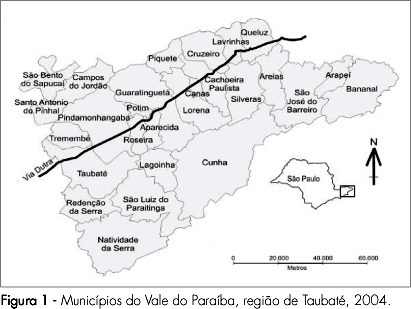Summary
Revista Brasileira de Ginecologia e Obstetrícia. 2020;42(12):820-828
To evaluate the distribution of the main sociodemographic and clinicalpathological characteristics in women with breast cancer according to the molecular profile by immunohistochemistry.
A cross-sectional, retrospective, analytical and quantitative study was performed, with an analysis of 137 medical records from January 2015 to December 2018 of women attending the High Complexity in Oncology Unit of the city of Imperatriz, state of Maranhão, Brazil. The immunohistochemical profile of tumors based on the estrogen and progesterone receptor, Human Epidermal growth factor Receptor-type 2 (HER2) overexpression and Ki67 cell proliferation indexwas defined, fromwhich six molecular subtypes were determined: luminal A, luminal B-HER2 negative, luminal B-HER2 positive, triple negative, overexpression of HER2 and inconclusive.
A total of 52.6% of the patients were postmenopausal, mean age 52.1 years old, brown (56.2%), had a schooling level < 9 years (40%), staging > IIB (52.6%) and 23.4% hadmetastasis. Invasive ductal carcinoma accounted for 84.7%, tumor size was 2 to 5 cm (48.9%), with lymph node involvement (56.2%), axillary lymphadenectomy in 67.2%, andmastectomy in 73.7% of the patients. Themost frequentmolecular subtype was the luminal B-HER2 negative (36.5%), and the luminal A subtype showed characteristics of better prognosis when compared with the others.
It was concluded that in the association of molecular subtypes with sociodemographic and clinical-pathological characteristics, there were no statistically significant results obtained, except for complementary therapy, referring to hormone therapy, and there was a high index of metastasis at diagnosis, which was a worrying factor and indicative of failures in the screening and early diagnosis of this population.
Summary
Revista Brasileira de Ginecologia e Obstetrícia. 2010;32(8):386-392
DOI 10.1590/S0100-72032010000800005
PURPOSE: to evaluate the incidence and direct economic impact of cervical cancer (CC) in Roraima, in 2009, and to analyze the epidemiological profile of patients with this disease. METHODS: the histopathologic reports issued in Roraima in 2009 were reviewed, as were hospital records of female patients under treatment for cancer. Clinical data and medical procedures related to CC were recorded. CC carriers were treated under expenses of the public Brazilian health system (SUS) in Roraima underwent an interview dealing with socio-economic topics. RESULTS: we registered 90 cases of CC and high grade pre-invasive lesions. Roraima has the highest incidence of CC of Brazil (46.21 cases/100,000 women), which is 3 times higher than that of breast cancer, comparable to low-income developing countries. The epidemiological profile shows patients with economic deprivation, social disadvantage, low education, early first intercourse (mean age is 13.8 years), and high parity (medium of 5.5 gestations). Among the patients included in this report, 71.7% had never been submited to a Pap smear, and ignorance about it was the main reported reason (47.4%). As a public health problem, the management of CC generates direct annual expenditures of more than R$ 600,000, with an average cost per patient of R$ 8,711. CONCLUSIONS: CC is the most common cancer among women from Roraima, and represents a serious public health problem in Roraima. Its high economic impact favors the implementation of preventive strategies from the standpoint of cost-effectiveness. The profile of patients reveals the ineffectiveness of preventive services in reaching patients with a socio-economic exclusion profile at high risk for cervical cancer.
Summary
Revista Brasileira de Ginecologia e Obstetrícia. 2009;31(4):171-176
DOI 10.1590/S0100-72032009000400003
PURPOSE: to apply geoprocessing techniques for the spatial birth profile analysis of each municipality. METHODS: ecological and exploratory study, using data from the Health Information System about born alive babies in 2004, and using geoprocessing techniques. The spatial autocorrelations of the variables: cesarean section, mother's schooling, low birth weight, Apgar score at five minutes, prematurity, number of medical appointments and adolescent mothers, besides the map with the index of human development were estimated. For the detection of spatial events aggregates, Moran's I M statistics, through the program Terra View 3.13 (developed by INPE and available to the public) was used. Spatial maps with those variables were built, and Pearson's correlation coefficients, estimated. RESULTS: results have shown that the rate of born alive babies, from mothers with school level over primary school and from cesarean sections, presented a spatial pattern visually identifiable and significant spatial self-correlation. Low birth weight, prematurity, Apgar score, number of pre-natal appointments and adolescent mothers have presented a random spatial pattern, showing that, in this analysis scale, those markers have not discriminated the risk groups, despite their unquestionable predictive value for children's morbidity-mortality at individual level. There has been a positive correlation between cesarean section and schooling, and between cesarean section and human development index; and a negative correlation between adolescent mothers and human development index, with statistical significance (p<0.05). CONCLUSIONS: this methodology has allowed us to identify spatial clusters for the variables cesarean section and mother's schooling, besides deepening our knowledge on birth profile in the municipalities, presenting good potential on how to direct actions for specific areas.
